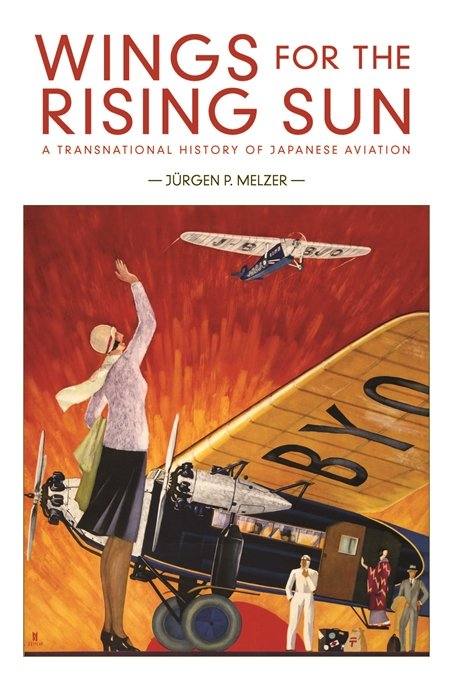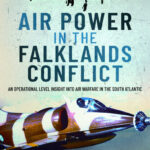
I think this is a first for this series: three books by past Aviation Cultures presenters!
Crotty, David. A Flying Life: John Duigan and the First Australian Aeroplane. Melbourne: Museum Victoria, 2010. This is an excellent book on a narrow topic. As you might infer from the title, John Duigan built the first successful Australian aeroplane, first flying it near Mia Mia in October 1910 and making many flights thereafter. Crotty (formerly curator at the RAAF Museum, among other places) is a careful researcher and never overclaims on behalf of his subject, who anyway had a very interesting flying career by any measure. Duigan, a trained engineer, built his Farman-type aeroplane from publicly available photos and descriptions, travelled to Britain to buy what was, in effect, the prototype of the Avro E (and so the forerunner of the hugely important 504), and joined the AFC, where he flew RE.8s over the Western Front and won the MC. Profusely illustrated too, with many photos of Duigan’s flights as well as aircraft profiles by Juanita Franzi. Duigan’s aeroplane still exists, by the way, in Museum Victoria’s collection where I’ve seen it (though it’s apparently currently in storage).
Melzer, Jürgen P. Wings for the Rising Sun: A Transnational History of Japanese Aviation. Cambridge: Harvard University Asia Center, 2020. I was very excited to see this published for a few reasons. Firstly, national aviation histories are always welcome, particularly when the national aviation history in question is both important and underserved as is the case here. Secondly, as the title says, this is a transnational aviation history as well, which makes a strong case for the critical role played by links with foreign companies and governments in fostering Japanese aviation technology through to the early 1930s, enabling them to quickly catch up and then, in some areas, surpass (and surprise) the West. It’s easy to gesture towards the transnational nature of aviation (and I may have been guilty of this myself!) but Wings for the Rising Sun provides a case study of how to do it properly, with archival research across five countries, four languages and three continents. Thirdly, while not using the term Melzer is very interested in aerial theatre, which in Japan seems to have been very much driven by the military, whether officially or unofficially, from the balloon era (Japan’s first balloon launches, in 1877 and 1878, were by the naval and military academies, respectively) right up to the record flight to Europe in 1937 by a Mitsubishi Ki-15 (owned by a newspaper but designed for military reconnaissance). Admittedly I would have liked to see a lot more about Japanese aerial theatre (I suspect there are more, and more civilian, examples to be found), but this is a great start.
Spencer, Alex M. British Imperial Air Power: The Royal Air Forces and the Defense of Australia and New Zealand between the World Wars. West Lafayette: Purdue University Press, 2020. This is also a transnational aviation history, though you might consider it an intraimperial one too. Where Melzer focuses on industry and technology, however, Spencer is more interested in policy and doctrine, especially the fitful attempts to align Antipodean airpower into some kind of imperial defence strategy or force structure. On Spencer’s account, that this proved so difficult was due partly to irreconcilable Australian and New Zealand desires for both greater independence and defence on the cheap (New Zealand, in particular, apparently did not even think about replacing its obsolete postwar aircraft until 1930, and even then backtracked almost immediately) and partly to British insistence on relying on a largely unfunded Singapore strategy as the lynch-pin of its Far East defences. But it’s hard to see what anyone involved should or could have done differently about the delays in deliveries of British aircraft in the latter half of the 1930s, when there were many competing demands. I did feel that, at times, the Australian/New Zealand aspects of the narrative were token or absent (there is little explanation of any overriding domestic or financial priorities before the Depression). The bibliography also seems a little outdated (it’s missing Augustine Meaher on the Singapore strategy, for example, and Christopher Waters on Australia and appeasement). Still, I learned a lot about such things as the Australian involvement in the Imperial Airship Scheme, and it’s always interesting to get an outsider’s perspective on your own history (which I guess is my value-add when it comes to British history…)
![]() This work is licensed under a Creative Commons Attribution-NonCommercial-NoDerivatives 4.0 International License.
Permissions beyond the scope of this license may be available at http://airminded.org/copyright/.
This work is licensed under a Creative Commons Attribution-NonCommercial-NoDerivatives 4.0 International License.
Permissions beyond the scope of this license may be available at http://airminded.org/copyright/.





